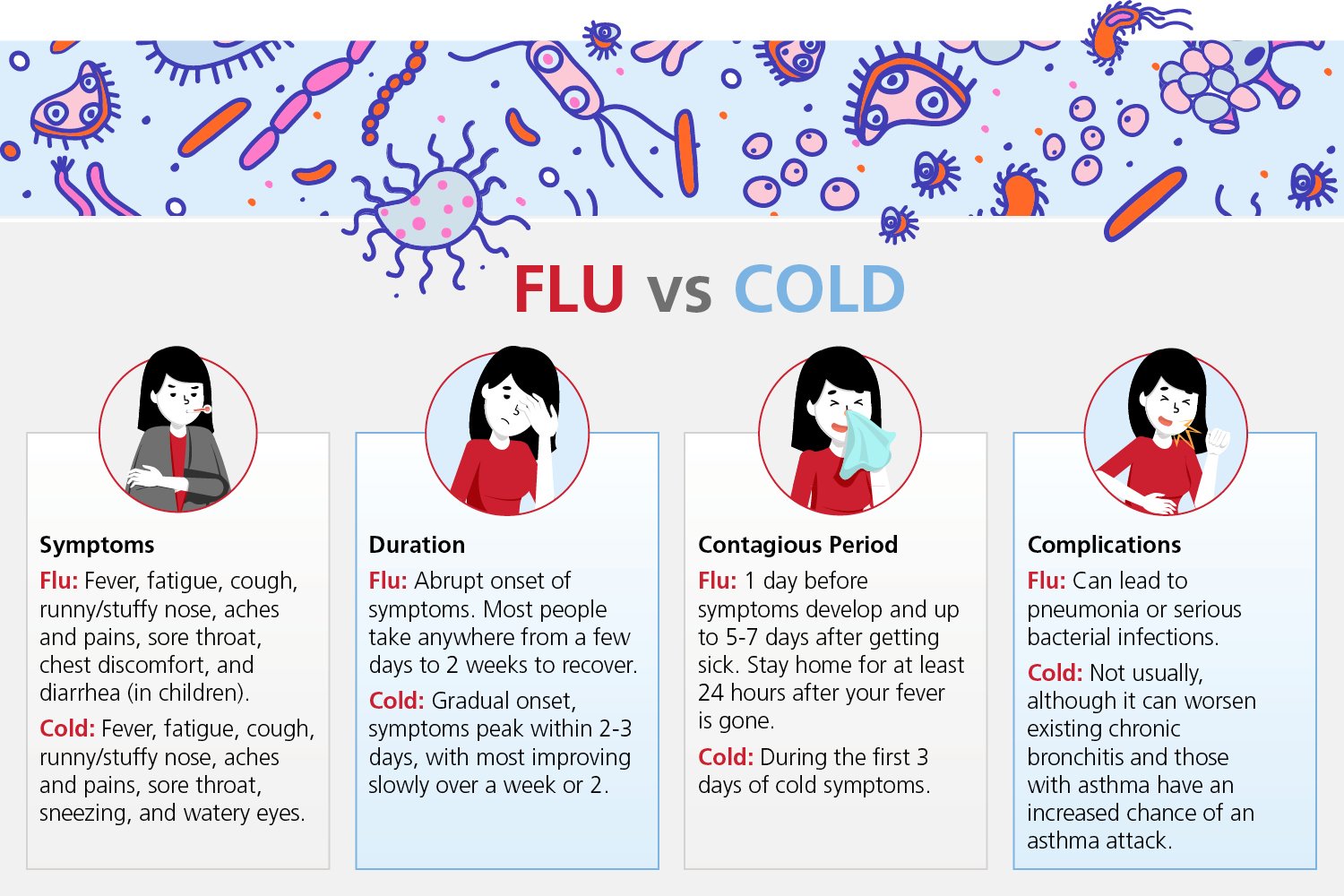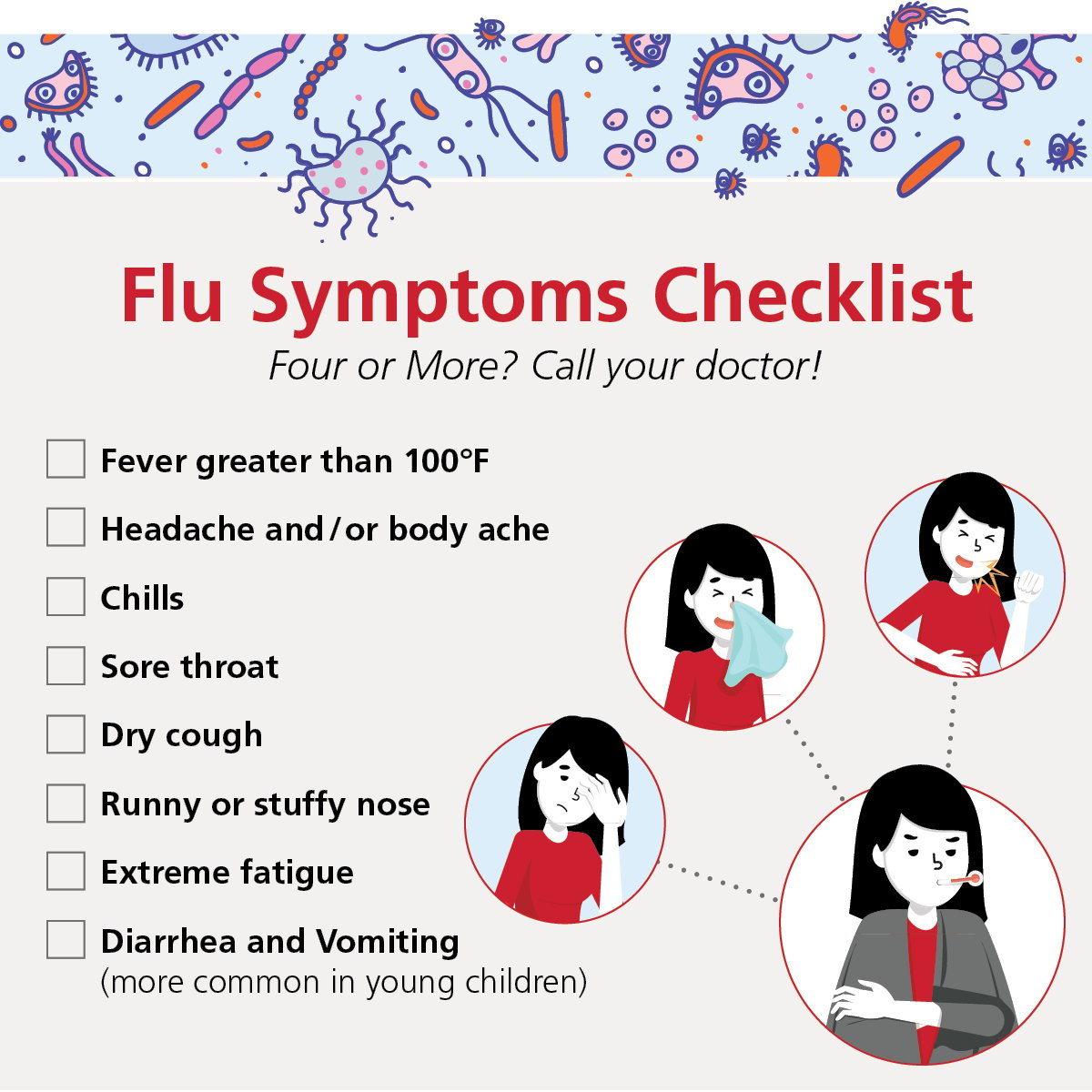Learn how to differentiate between COVID-19 and the flu>>
What's the difference between a cold and the flu?
Well, there's a bunch of differences!

And while they're both viruses, the flu is caused by influenza viruses. The common cold, on the other hand, could be caused by a range of viruses—the most typical being rhinoviruses. In general, colds are milder than the flu and less contagious.
How the flu spreads
Many experts believe that the flu spreads through droplets created when a person coughs, sneezes, or even talks. Those droplets can span distances of up to six feet and can be inhaled by others nearby. It's also spread by touching your mouth, nose, or eyes before washing your hands, and after contact with items contaminated from an infected person.
People can be contagious one day before symptoms begin and up to five to seven days after symptoms begin. Children can have symptoms for longer than seven days.
What are the symptoms of the flu?
- Fever (greater than 100 degrees Fahrenheit)
- Headache and body aches
- Chills
- Dry cough
- Extreme tiredness
- Sore throat
- Runny or stuffy nose
- Diarrhea and vomiting
How to prevent the flu
- Get vaccinated. Vaccination is the number one way to prevent getting the flu. Please contact your physician to discuss vaccination options.
- Maintain a healthy lifestyle. Get adequate sleep, exercise, manage your stress, drink plenty of fluids, and eat nutritious foods.
- Avoid close contact with someone who has the flu, and ask sick visitors to avoid coming to your home.
- Avoid touching your eyes, nose, and mouth.
- Wash your hands. You and any other household members or visitors should wash their hands often with soap and water for 15 to 20 seconds, or use a waterless hand gel.
- Cover your nose and mouth. Use a tissue when you sneeze or cough, and then discard it immediately. Sneeze into your sleeve if a tissue isn't handy. An uncovered sneeze can spread germs a distance of three (or more) feet.
- Avoid contact with others as much as possible while you have a fever or other flu symptoms.
- Keep surfaces clean with a household disinfectant. The virus can live on surfaces for two to eight hours.
What can you do if you think you have the flu?
- Consult your flu checklist.
- Contact your doctor or your community health care professional (antiviral medications can reduce the severity of the virus if taken in the first 48 hours of symptoms).
- Stay away from others until you no longer have a fever for 24 hours without using fever-reducing medications.

Want more information?
Be sure to visit CDC.gov to find more information about the flu.



Let Us Know What You Thought about this Post.
Put your Comment Below.